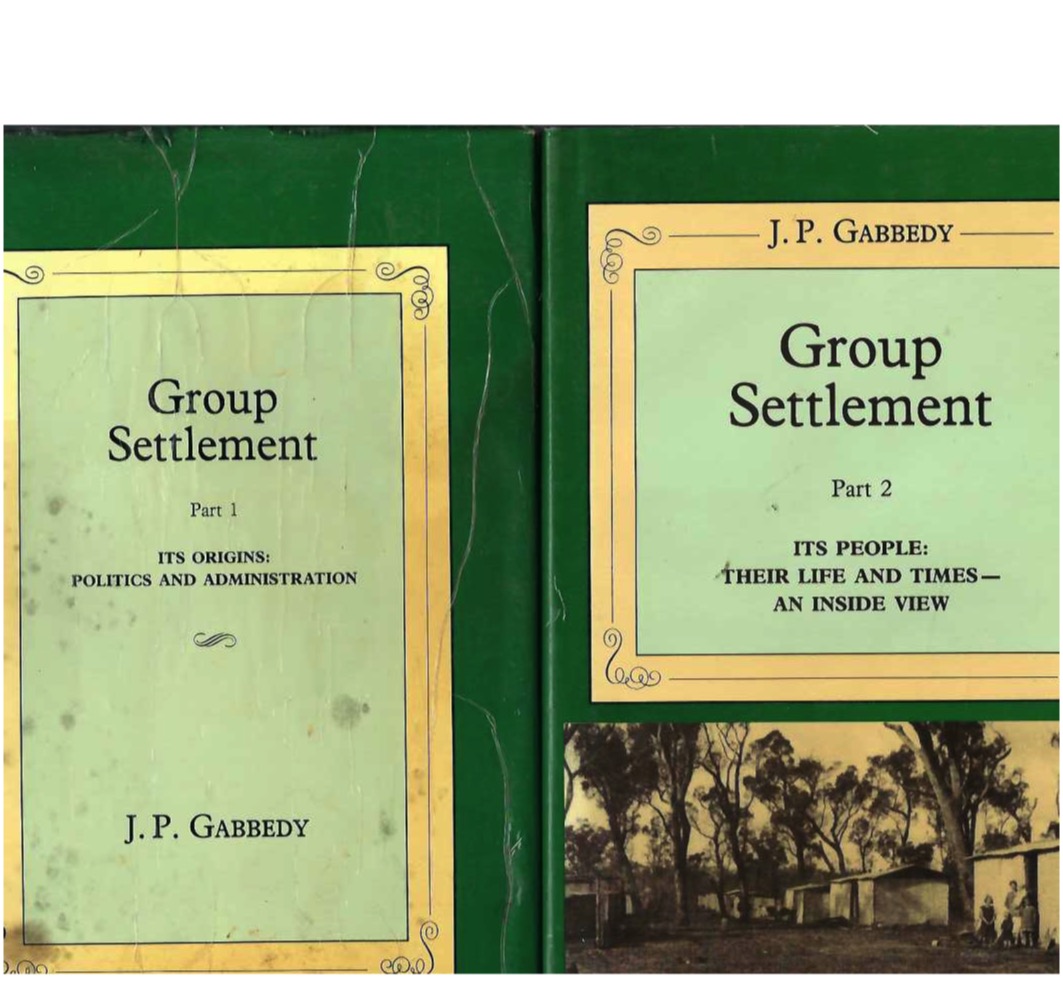The standard work on the Group Settlement scheme in Western Australia
pt. 1. Its origins
pt. 2. Its people.
Agricultural colonies — Western Australia. | Western Australia — History. | Western Australia — Emigration and immigration — History.
First Edition. Signed by Author. #260122 SCARCE (Note: moisture damage to dustjacket of Volume 1)
The Group Settlement Scheme was an assisted migration scheme which operated in Western Australia from the early 1920s. It was engineered by Premier James Mitchell and followed on from the Soldier Settlement Scheme immediately after World War I. Targeting civilians and others who were otherwise ineligible for the Soldiers’ scheme, its principal purpose was to provide a labour force to open up the large tracts of potential agricultural land to ultimately reduce dependence on food imports from interstate. It was also seen by Australians as boosting the ideals of the White Australia policy by strengthening the Anglo-Australian cultural identity of Australia.[1] High levels of post-war unemployment in Britain saw the UK Government seizing on the scheme as a way to reduce dole-queues. Over 6,000 people emigrated to Western Australia under the scheme which was funded jointly by the State, Federal and UK Governments.
Mitchell’s plan was for 40-to-65-hectare (99-to-161-acre) land holdings to be cleared and intensively cultivated by the settlers, initially supervised by experienced farmers, to develop a self-sustaining dairy industry. Premier Mitchell was nicknamed “Moo-Cow” from his perceived obsession with the dairy industry.[2] He and his Nationalist and Country Party colleagues considered the ‘unlimited land resources for closer settlement’ were the key to the state’s economic progress.[3]
